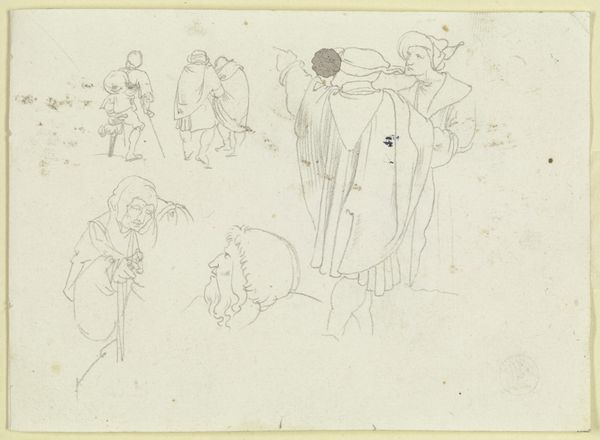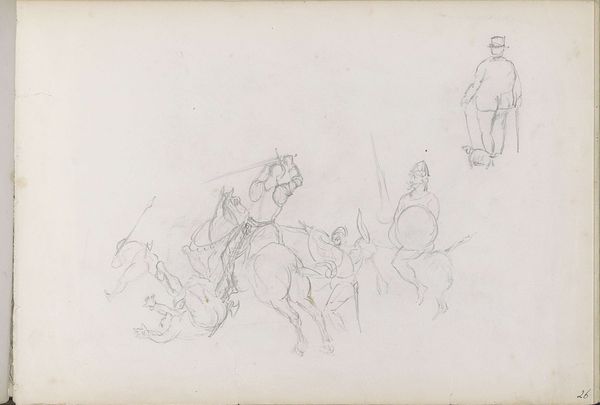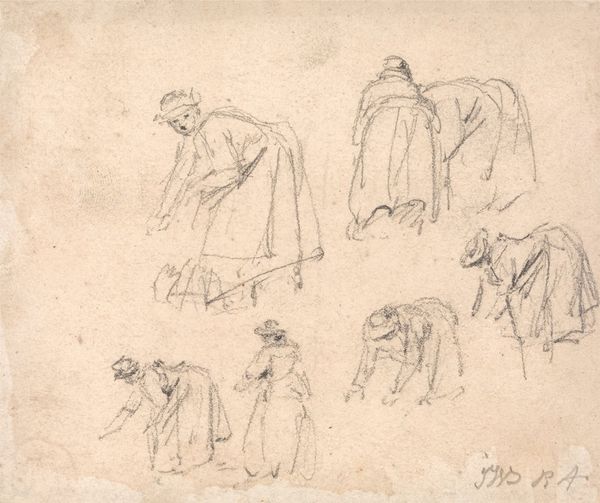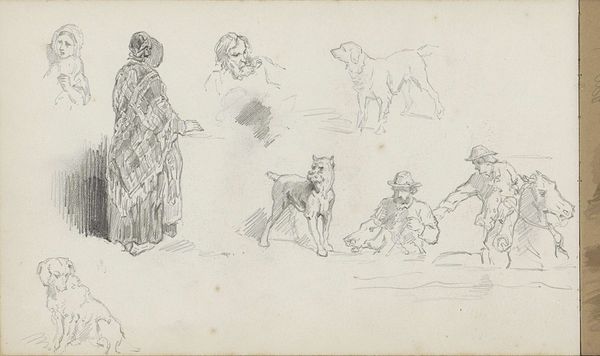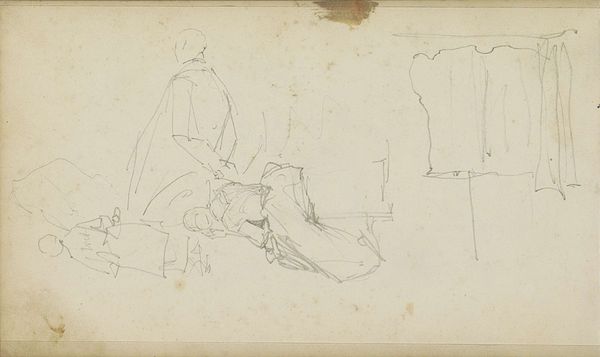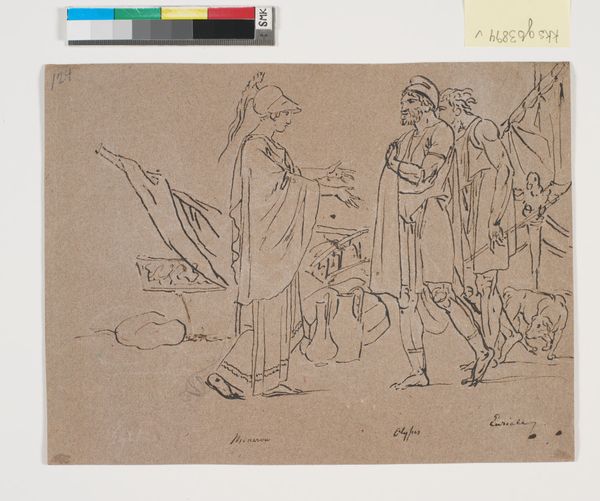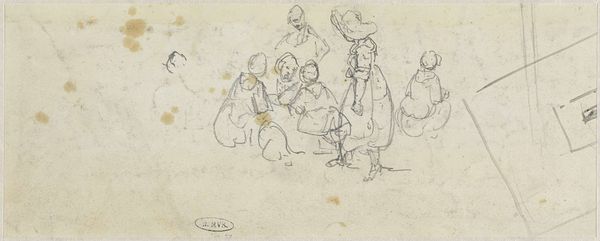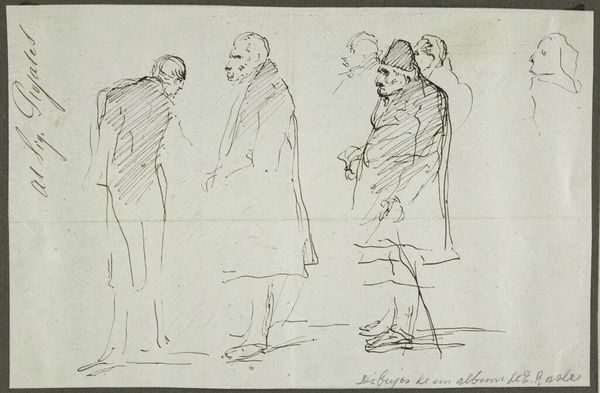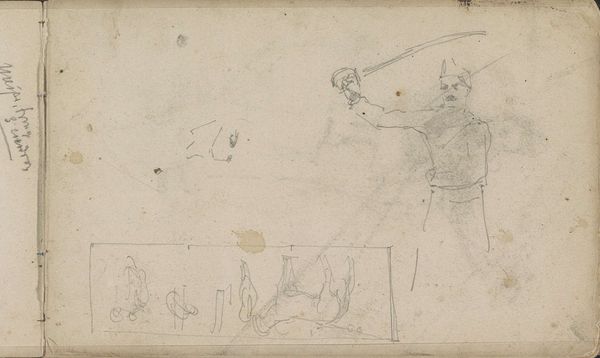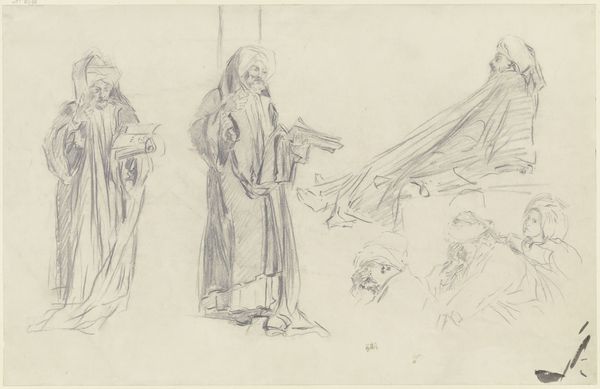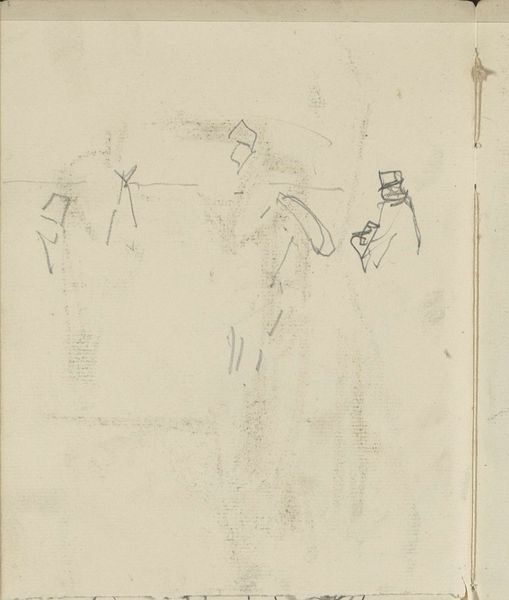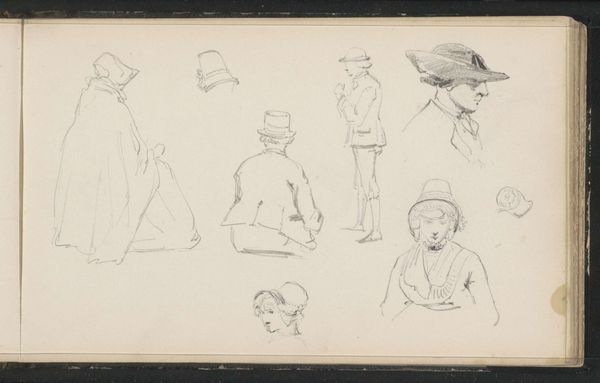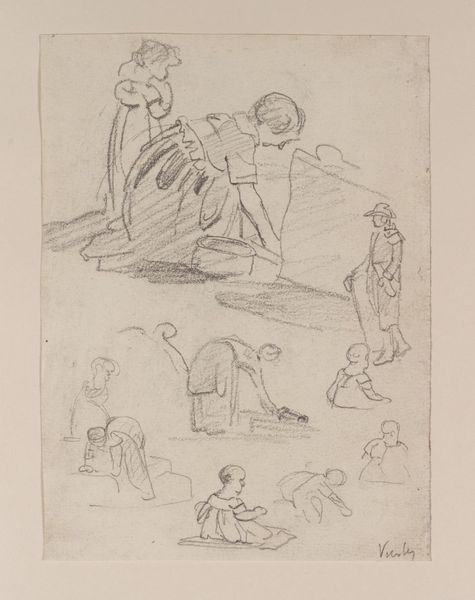
Priester met een vignet, koning met een Saksische edelman en hofdames onder het bewind van Willem II 1843 - 1844
0:00
0:00
drawing, paper, pencil
#
drawing
#
narrative-art
#
figuration
#
paper
#
pencil
#
history-painting
Copyright: Rijks Museum: Open Domain
Curator: Looking at this delicate drawing by Johannes Tavenraat, dating from 1843-1844, one can’t help but feel transported back to the reign of Willem II. It’s currently held in the collection of the Rijksmuseum, titled "Priester met een vignet, koning met een Saksische edelman en hofdames onder het bewind van Willem II". Editor: Immediately, I'm struck by the sketched simplicity – like fleeting historical vignettes caught in pencil. It feels ephemeral, like a memory fading. Curator: Absolutely, and that’s perhaps intended. As a drawing, its narrative theme leans into this sense of a quickly documented event, like historical notes from life. Let’s begin by considering that each character is imbued with meaning beyond their simple outlines. Look at how Tavenraat uses dress to denote status, the priest carrying an important symbol that appears to be some sort of banner with a cross and then a regal looking royal, all the way to some sort of slain king with attendant maidens. Editor: Yes, that cross, in particular, speaks volumes, doesn't it? It's a potent symbol, instantly evoking both religious authority and, considering the historical context, perhaps also invoking the complexities of faith and power in 19th century Netherlands. Then we have the depiction of William II as well, who was still at that time some sort of royalty. The overall image resonates with classic iconographical tension—church, royalty, sacrifice, even. What purpose do you think it may have played to Tavenraat himself? Curator: Ah, a loaded question, for sure. This may not be directly a commission, but more of a meditation, even—where the quick strokes are impressions left to be seen later. Perhaps Tavenraat felt inspired, personally, to interpret it within these frames; it becomes intensely subjective for me. We, as the audience now viewing the work, become another mirror reflecting what history makes of that, or vice versa. It is not some straightforward truth we are gleaning. Editor: Right. It’s less a portrayal, then, and more a personal reaction, perhaps, using these historical figures as stand-ins. Which leads to something interesting - the cultural memory associated with that kind of fallen king symbol. In what kind of dialogue about culture and its meanings do you find yourself considering by encountering it, knowing the artwork is inspired from true happenings, real people. Curator: It speaks volumes of Tavenraat, too. To grapple with a vision, it must stem, at the core, from what makes life itself so profound and, also, ultimately temporal and fleeting. Editor: Precisely. That exploration gives the piece a contemporary voice.
Comments
No comments
Be the first to comment and join the conversation on the ultimate creative platform.
